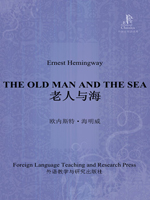老人与海
The Indomitable Spirit: A Reflection on Hemingway's *The Old Man and the Sea
Ernest Hemingway’s *The Old Man and the Sea* is a deceptively simple novella that distills profound existential truths into the story of an aging fisherman’s battle with a giant marlin. On the surface, it is a tale of man versus nature, but beneath its sparse prose lies a meditation on human dignity, perseverance, and the paradoxical relationship between triumph and defeat. Through Santiago’s three-day ordeal, Hemingway crafts a timeless allegory of the human condition, one that resonates with stoic beauty and quiet tragedy.
At its core, the novella explores the concept of *dignity in struggle*. Santiago, long stigmatized as *salao* (unlucky), embodies Hemingway’s code of grace under pressure. His solitary battle against the marlin transcends physical endurance; it becomes a metaphysical confrontation with mortality and purpose. The old man’s refrain—“A man can be destroyed but not defeated”—encapsulates Hemingway’s philosophy that true victory lies not in material conquest but in the preservation of one’s spirit. When sharks reduce the marlin to a skeleton, Santiago’s physical loss is undeniable, yet his moral triumph persists. This paradox mirrors life itself: our greatest efforts often leave no tangible legacy, yet they define our humanity.
Hemingway’s symbolism elevates the narrative to mythic proportions. The sea represents both life’s abundance and its indifference—a stage for human drama that remains eternally unconcerned. The marlin, described with religious reverence (“he is my brother”), transforms from prey to spiritual counterpart, its death a sacrament of mutual respect. Even the sharks, agents of entropy, serve as necessary antagonists that test Santiago’s resolve. The recurring image of lions on African beaches—Santiago’s youthful memory—functions as a leitmotif of primal vitality, contrasting with his present fragility while affirming the persistence of inner strength.
Stylistically, Hemingway’s “iceberg theory” achieves perfection here. The stripped-down narrative, devoid of sentimentalism, allows archetypal themes to emerge organically. Santiago’s minimal dialogue with the boy Manolin—their conversations about baseball and fishing gear—accentuates the loneliness of his quest while hinting at cyclical renewal. The old man’s internal monologues, blending Catholic imagery with existential grit (“I am not religious… but I will say ten Hail Marys”), reveal Hemingway’s nuanced exploration of faith as both ritual and psychological anchor.
Critics might argue that the novella romanticizes suffering, yet this interpretation misses Hemingway’s deeper critique. Santiago’s heroism is not in his suffering but in his *refusal to let suffering define him*. When he returns to shore bearing only a fish skeleton, Hemingway subverts traditional notions of success. The tourists’ misidentification of the skeleton as a shark becomes a biting commentary on society’s blindness to true valor—a valor measured in unseen battles and private integrity.
Ultimately, *The Old Man and the Sea* endures as literature’s most poignant answer to existential despair. In an indifferent universe where “man is not made for defeat,” Hemingway suggests that meaning emerges not from cosmic significance but from the courage to engage in doomed struggles. Santiago sleeps dreaming of lions not because he has conquered the sea, but because he has honored life’s contract—to fight with authenticity until the final tide. His empty hands hold the weight of human nobility.



 京公网安备 11010802032529号
京公网安备 11010802032529号